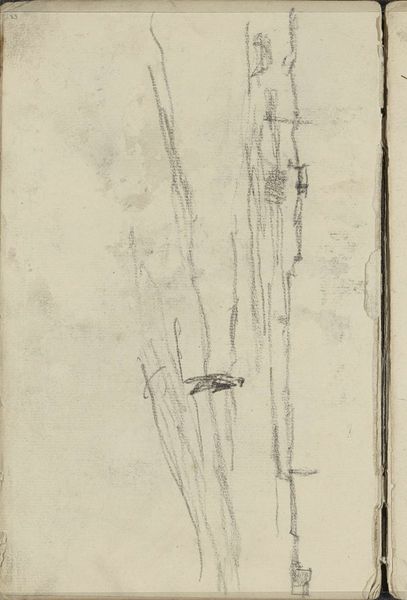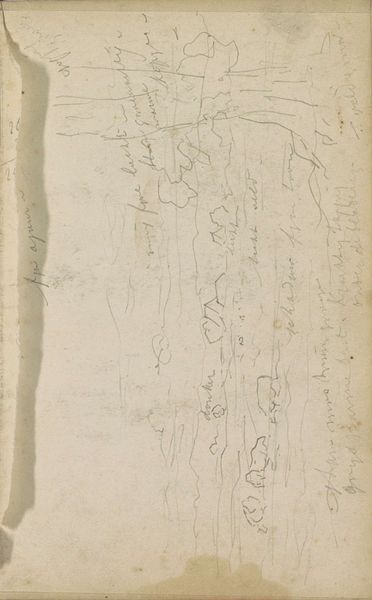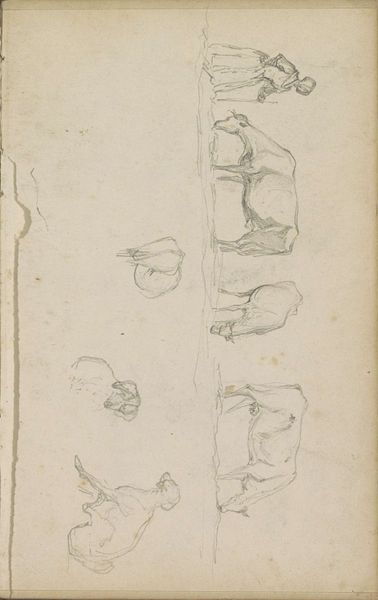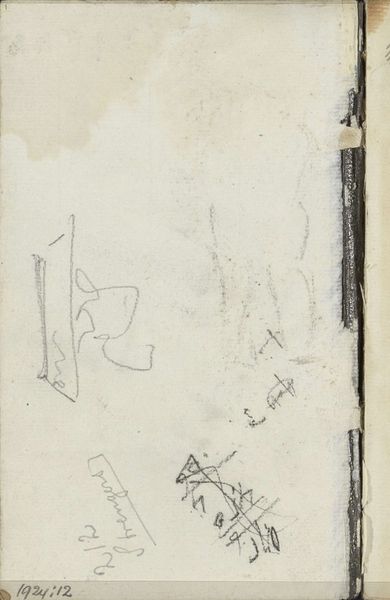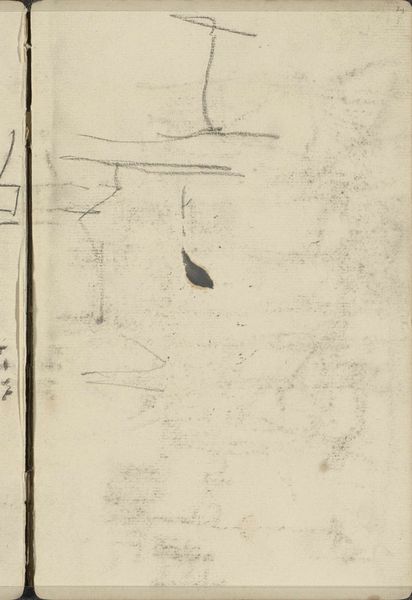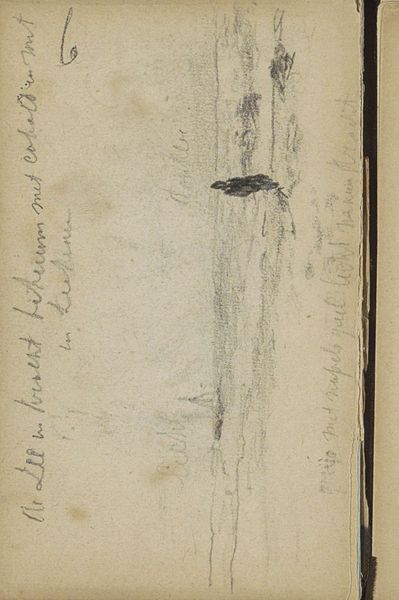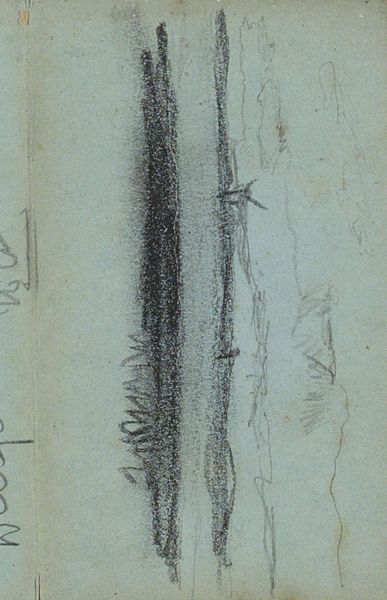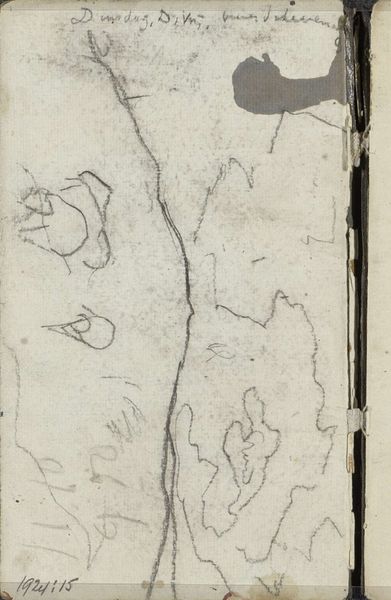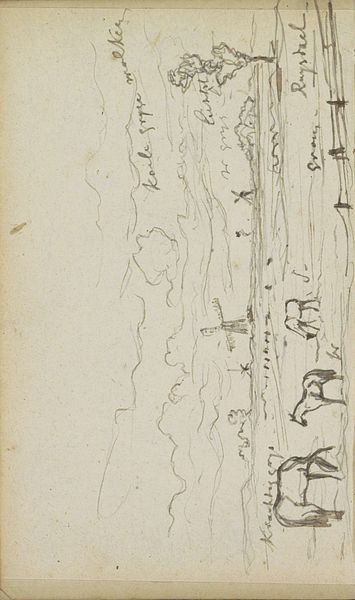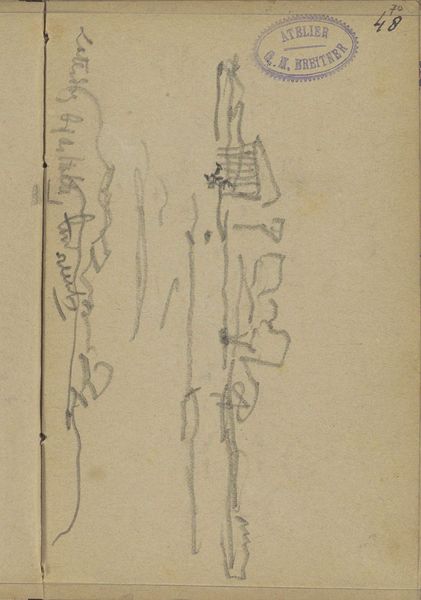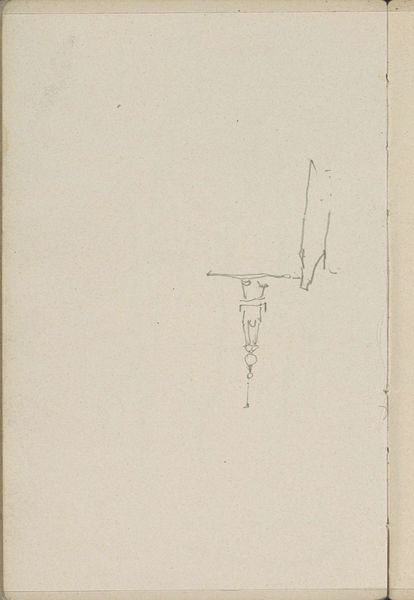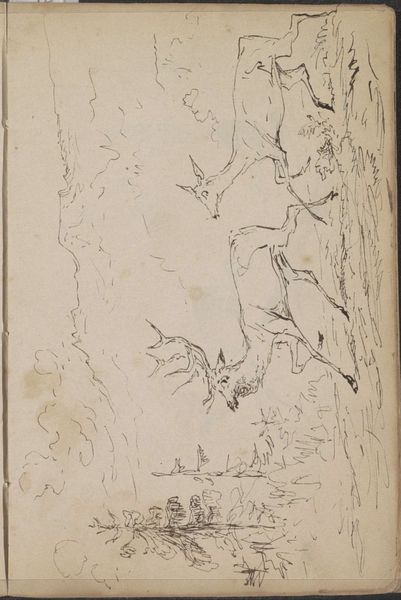
drawing, paper, pencil
#
portrait
#
drawing
#
pencil sketch
#
paper
#
pencil
#
sketchbook drawing
#
realism
Copyright: Rijks Museum: Open Domain
Curator: We're looking at a sketch by George Hendrik Breitner entitled "Dier," created between 1883 and 1885. It’s a pencil drawing on paper, currently held in the Rijksmuseum. Editor: Immediately, I see something fleeting, almost ephemeral in its presentation. The sparse lines, the apparent speed of execution… it feels less like a definitive portrait and more like a captured moment, an impression. Curator: Indeed. Breitner, a key figure in Dutch Realism, uses the immediacy of pencil to great effect. Notice the dynamic use of line weight—varying from the faintest suggestion to almost aggressive hatching that conveys dimension and weight. Editor: The hatching you mentioned... It really emphasizes the creature’s eyes and brow. Do you think this emphasis invites us to consider the essence of 'Dier’ and how society views it through symbolism or preconceived notions? I feel an urge to decipher the animal and understand its significance. Curator: I think that the realism presented discourages such interpretive flights. Breitner's compositional choice keeps the animal out-of-frame, minimizing any sentimental engagement on our part, focusing instead on its fragmented structure. It seems he aimed to capture raw visual data of its essence through pure form rather than any symbolic gesture. Editor: But isn't realism itself a type of language? If one truly focuses on only the “seen”, doesn't that inadvertently ignore that perception is subjective. To me, even an unflinching observation may not preclude unconscious layers of meaning that seep into art from lived cultural experience and memory, or even animalistic primal awareness, as he chooses to draw *this* subject! Curator: Perhaps, but look again at the deliberate economy of strokes. The precision defines its reality rather than cultural weight. Breitner wasn't illustrating mythology, but constructing perception—challenging us to look without narrative baggage. Editor: I can see your point of view more clearly, but I don’t fully discount mine. To engage deeply with any piece demands that we remain open to many aspects simultaneously. Curator: A worthy caveat; it is in acknowledging different lenses that our experiences can be that much more rich. Editor: Precisely! Seeing this sketch now feels like discovering something new hidden in plain sight—thanks to the differing ways we engaged with the work of Breitner.
Comments
No comments
Be the first to comment and join the conversation on the ultimate creative platform.
